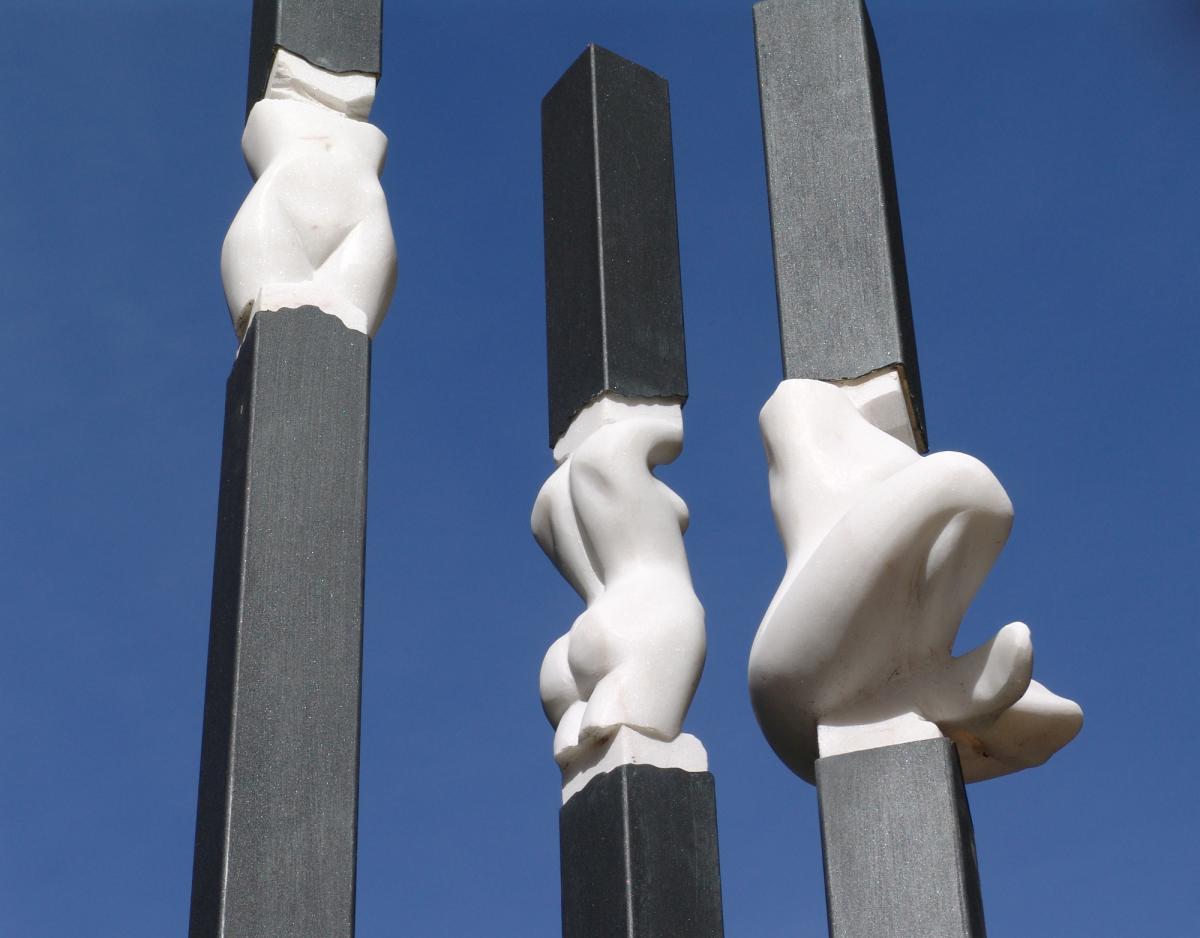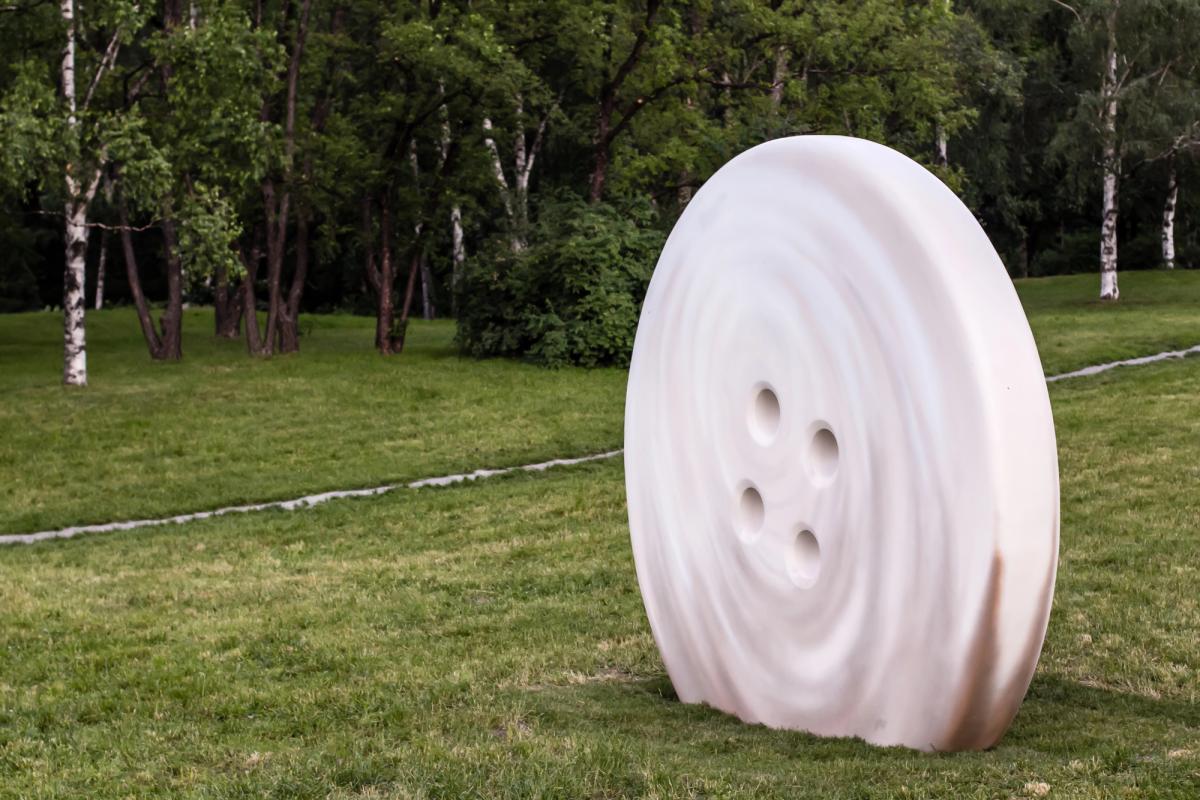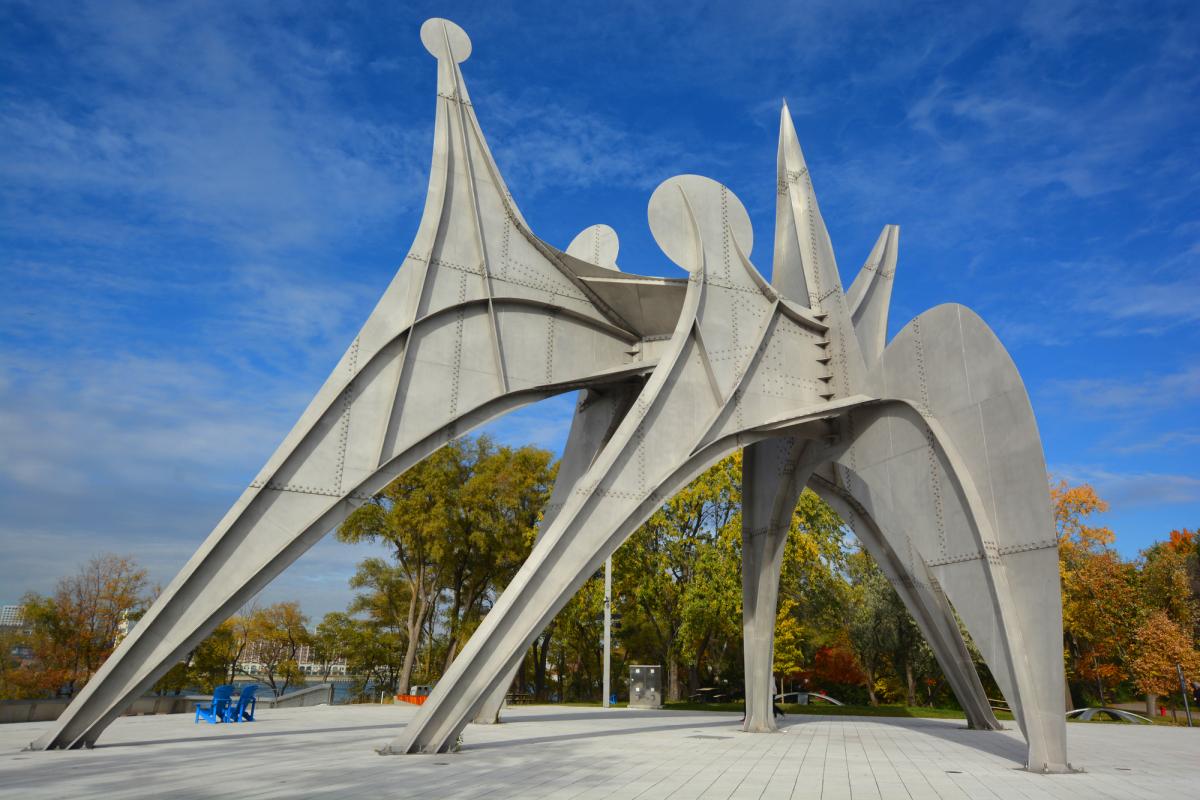The contemporary sculpture, as a form of artistic expression in constant metamorphosis, emerges as a mirror of modern society, reflecting its complexities and concerns.
Shaped by a variety of cultural influences, political and technological, contemporary sculpture transcends the traditional boundaries of art, challenging expectations and redefining the limits of the possible.
In this effervescent scenario, artists explore a wide range of themes and techniques, from the deepest existential questions to reflections on global interconnection and the rapid evolution of technology.
Each work is a unique piece of an ever-evolving puzzle., contributing to the rich tapestry of contemporary artistic expression.
By diving into the universe of contemporary sculpture, we are faced not only with shapes and materials, but also with ideas and narratives that challenge our perception and expand our horizons.
Contemporary sculpture transcends mere physical representation and becomes a window into the collective unconscious, a bridge between the past and the future, a voice for the marginalized and a platform for intercultural dialogue.
In a world in constant transformation, contemporary sculpture stands out as a beacon of creativity and innovation, guiding us on a journey of discovery and reflection.
Table of Contents
- 1. The Renaissance of Sculpture: A Brief Historical Contextórico
- 2. Contemporary Sculptureânea: Tendênces and Diversity
- 3. Themes and MotiveçõIt’s at Contemporary Sculptureânea
- 4. Contemporary Sculptureânea in the Context of Pop Culture
- 5. The Future of Contemporary Sculptureânea: Inovaçãand try itçãthe
- Contemporary Sculptureânea – A Journey of Inspiração and Discovery
1. The Renaissance of Sculpture: A Brief Historical Context
Sculpture has played a central role in humanity's visual narrative, with its trajectory traced from ancient civilizations to the present day.
However, It was during the Renaissance that this art form reached its peak, driven by the intellectual and cultural fervor that swept Europe.
Renowned artists such as Michelangelo, Donatello and Leonardo da Vinci emerged as titans of Renaissance sculpture, leaving a lasting legacy that continues to inspire later generations.
Your masterpieces, like the iconic “David” of Michelangelo and the innovator “The Thinker” by Rodin, remain as testimonies of the genius and technical mastery of these masters.
The influence of the Renaissance on contemporary sculpture transcends centuries, influencing not only the aesthetics, but also the ideals and approaches of modern sculptors.
The principles of proportion, anatomy and emotional expression established during this period continue to serve as essential foundations for current sculptural practice.
In addition, The Renaissance emphasis on exploring the human form and representing human individuality still resonates in the work of many contemporary artists, who seek to capture the complexity of the human condition in their works.
When revisiting the Renaissance, we recognize not only the historical importance of this period, but also his continuing influence on the evolution of contemporary sculpture.
Renaissance masters not only elevated sculpture to new heights of technical excellence, but also expanded the conceptual horizons of art, setting the stage for the diversity and innovation that characterize sculptural practice today.
Basically, The Renaissance was not just a period of cultural renewal, but also a crucial milestone in sculpture's journey toward its fullest and most meaningful expression.

2. Contemporary Sculpture: Trends and Diversity
Contemporary sculpture is a vast and diverse field, where artists explore a wide range of forms, materials and concepts to express your visions and ideas.
From traditional forms carved in marble to interactive multimedia installations, the diversity of approaches in contemporary sculpture reflects the plurality of perspectives and experiences in today's society.
Some of the prominent trends and features of this scenario include:
Exploration of Unconventional Materials: Contemporary artists often defy convention by experimenting with a variety of non-traditional materials, like plastic, recycled metal, blown glass and even organic elements.
This innovative approach not only pushes the boundaries of sculpture, but also promotes reflection on environmental issues and sustainability.
Abstraction and Minimalism: Many contemporary sculptors opt for an abstract, minimalist aesthetic, seeking to simplify forms and reduce elements to their purest essence.
This trend emphasizes emotional and conceptual expression over literal representation, inviting viewers to interpret and interact with the work in a subjective way.
Narrative and Social Context: In response to the challenges and issues of the contemporary world, Many artists use sculpture as a means of telling stories and exploring social issues, political and cultural.
These works often incorporate narrative and symbolic elements, inviting viewers to reflect on their own experience and perspective.
3. Themes and Motivations in Contemporary Sculpture
In contemporary sculpture, artists often explore a variety of themes that reflect the concerns and issues of modern society.
These recurring themes serve as a source of inspiration and motivation for creating works that provoke reflection and engagement..
Some of the most prominent themes in contemporary sculpture include:
Identity: The search for personal and collective identity is a central theme in contemporary sculpture, with artists exploring issues of race, genus, sexuality, and culture.
Works that address this theme often challenge stereotypes and social conventions, promoting deeper reflection on the diversity and complexity of the human experience.
Society: Many contemporary sculptors use their works to criticize and question the social and political structures that shape our lives..
Topics such as inequality, injustice, and alienation are often explored in impactful and provocative ways, encouraging viewers to consider their role in building a more just and equitable society.
Environment: With growing awareness of environmental issues, contemporary sculpture also addresses themes related to nature and sustainability.
Many artists use recycled materials and eco-friendly techniques in their works., while others create installations that highlight the fragile beauty and urgency of environmental protection.
These works not only draw attention to the climate crisis, but also inspire action and change.

4. Contemporary Sculpture in the Context of Pop Culture
The presence of contemporary sculpture in popular culture is evident in a variety of forms of expression, from films and music to fashion and interior design.
In these media, contemporary sculpture not only enriches visual aesthetics, but also contributes to the narrative and meaning of the works in which it is inserted.
Sign up to receive Event News
and the Universe of Arts first!
Some notable examples of this influence include:
References in Films and Series: Many contemporary films and series incorporate contemporary sculptures into their settings and plots., adding layers of meaning and depth to stories.
From works of art displayed in galleries to monumental sculptures in public spaces, the presence of contemporary sculpture contributes to the ambience and visual atmosphere of cinematographic productions.
Influence on Music and Visual Culture: Contemporary sculpture is also a source of inspiration for musicians, visual artists and fashion designers, who often incorporate sculptural elements into their creations.
From album covers to concert backdrops and runway outfits, the presence of contemporary sculpture in pop culture is a manifestation of the intersection between art and entertainment.
The relationship between sculptural art and contemporary trends is a two-way street, with each influencing and being influenced by the other.
On the one hand, contemporary sculpture reflects the concerns and interests of society at a given time, addressing social issues, political and cultural issues that are highlighted.
On the other hand, contemporary fashion trends, design and entertainment are often shaped and inspired by sculptural art, incorporating elements and styles that reflect the works and themes in vogue in the current art scene.
This dynamic interplay between contemporary sculpture and pop culture enriches the cultural experience as a whole, offering insights and reflections on the world we live in.
5. The Future of Contemporary Sculpture: Innovation and Experimentation
Contemporary sculpture is constantly evolving, and the future holds a vast horizon of possibilities for this form of artistic expression.
With the advancement of technology and the introduction of new materials, contemporary artists are exploring uncharted territories and pushing the boundaries of what is possible in sculpture.
Some of the trends and directions that could shape the future of contemporary sculpture include:
Technology Integration: Technology plays an increasingly important role in artistic practice, and this is reflected in contemporary sculpture.
From interactive sculptures that respond to touch and movement to works that incorporate elements of augmented reality and artificial intelligence, artists are exploring new ways to engage and interact with audiences through technology.
Experimentation with New Materials: In addition to traditional materials such as stone, metal and clay, Contemporary sculptors are experimenting with a variety of innovative materials, like plastic, carbon fiber, 3D printing and bioplastics.
This diversity of materials offers new opportunities for creativity and allows artists to explore textures, forms and concepts that were previously unimaginable.
Collaboration and Interaction: The future of contemporary sculpture can also be defined by collaboration and interaction between artists, spectators and communities.
Participatory art installations, Community art projects and urban interventions are just some of the ways that sculptors can engage more directly with the public and create experiences that transcend the traditional boundaries of art..
As we venture into the unknown, It is important to remember the crucial role of artists in the ongoing evolution of sculptural art.
As guardians of creativity and expression, Sculptors have the power to shape the future of art and inspire future generations to explore new horizons and possibilities in contemporary sculpture.
Contemporary Sculpture – A Journey of Inspiration and Discovery
In summary, contemporary sculpture emerges as a vibrant and constantly transforming art form, that transcends traditional boundaries and challenges viewer expectations.
Throughout this article, we explore the different aspects of this artistic expression, from its historical origins to its future trends and possibilities.
It became clear that contemporary sculpture is not limited to simply shaping physical forms, but also encompasses a wide range of topics, techniques and materials that reflect the complexity of the human condition and the world around us.
We invite readers to delve deeper into the fascinating world of contemporary sculpture, exploring art galleries, museums and exhibitions to discover new works and experiences.
Through this journey of discovery, readers can expand their artistic horizons, develop a deeper appreciation for the diversity of human expression and find inspiration for your own creative journeys.
May contemporary sculpture continue to challenge us, excite and connect, enriching our lives and our understanding of the world around us.



